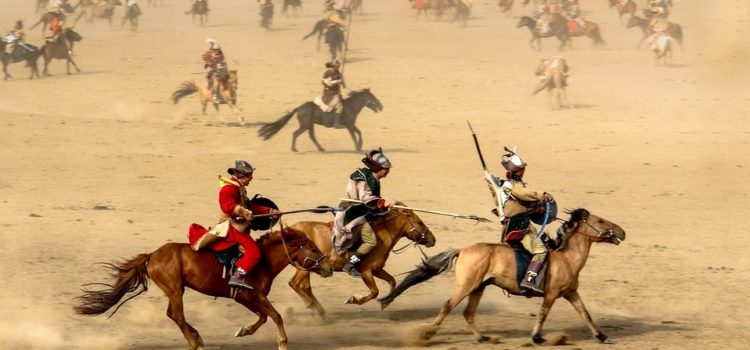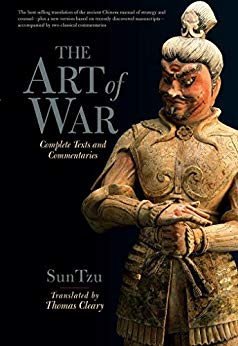

This article is an excerpt from the Shortform summary of "The Art of War" by Sun Tzu. Shortform has the world's best summaries of books you should be reading.
Like this article? Sign up for a free trial here .
What are some of the most important Art of War lessons from Sun Tzu? What do they mean? Are they applicable to modern-day life?
The Art of War was written as a strategic handbook for how to navigate military conflict. The principles and suggestions provided throughout the book are geared toward armed struggle and the relationships between governments and military factions, but they’re adaptable to everyday life as well. We’ll cover some of the key Art of War lessons.
Lesson #1: Know Thy Self, Know Thy Enemy
This is one of the most famous Art of War lessons. You should consider how the five traits in Art of War affect both your side and your opponent. Only in knowing both your strengths and weaknesses, as well as those of the enemy, can you begin to form a strategic plan. When you understand these traits, you will be able to assess the likelihood of victory in any circumstance. If victory is not certain, you should not engage in conflict.
Using Knowledge to Gain Advantage
First, you should assess these five traits regarding your forces. Then, assess these five traits for your opponent to size up the competition.
- If you understand both your strengths and efficiency and those of your enemy, you can realistically compare the two and predict the likelihood of victory during conflicts.
- You should prepare to enter into conflict only when the outcome shows the likelihood of success for your side.
Many leaders are aware of these advantageous traits, but only those who incorporate them into their leadership practices will succeed.
- For instance, if you know your opponent is a savage leader, their relationship with the civilian population will likely include discord.
- If there is discord between civilians and leadership, there may be a lack of support for your opponent’s actions.
- This type of discontinuity can expose vulnerabilities in their tactics, which provides you with opportunities to attack.
Lesson #2: The supreme art of war is to subdue the enemy without fighting.
One of the most relevant Art of War lessons today is the nonviolent approach. The best time to strike an enemy is when they are involved in preparations. Strike before the enemy is fully mobilized, and they will be unable to fight back. This may prevent a battle. This strategy involves using intelligence, rather than brawn, to win.
If intelligent strategies don’t work, the next strategy is to win through intimidation.
- Form alliances to increase your strength to a point where fighting would be ill-advised for your opponent.
- Form alliances with the enemy’s allies to disrupt the enemy’s power.
Ultimate victory is when battle has been thwarted through intelligence or intimidation, there has been no destruction, no cities have been seized, and no blood has been shed. Framing bloodless wars as the ultimate victory makes this one of the most significant Art of War lessons.
Lesson #3: Let your plans be dark and as impenetrable as night.
The Art of War lesson here is to conceal your intentions from your opponent. The goal of any conflict is to control your opponent and overcome them. Controlling their beliefs about your abilities helps you understand their assumptions and plan a strategy accordingly. As a well-known translation of Sun Tzu puts it, “all warfare is based on deception.”
Deception includes feigning weakness when you are strong or professing ignorance when you are informed. Appearing to be weak, unprepared, or small in size can lure your opponent into traps and make them susceptible to misguided actions or responses.
For instance, creating a scenario where only a small portion of your force is visible can mislead opponents into thinking they outnumber or outarm you. When they prepare an attack under that guise, they will be ill-prepared for the full strength of your forces. This is the power of this Art of War lesson.
Another example is allowing your opponent to win small victories or gains. Your opponent may fall victim to greed or an inflated ego, which will confuse and hinder their strategy when the truth is revealed.
Lesson #4: Do not engage an enemy more powerful than you.
Although it seems obvious, many people fail to heed this Art of War lesson. If your numbers are not large enough to attack, such as only five times larger than those of the enemy, divide your troops into groups.
- Use several groups to broach an attack, and keep a few back to bar against surprise attacks and exploit any enemy weaknesses you observe as the attack progresses.
If you are only slightly larger, such as a two-to-one ratio, divide your troops into two groups.
- Use one group to draw out the opponent, and use the other to attack them unexpectedly.
If you are equal in size and ability, deploy strategies to avoid direct combat.
- Use strategies of division to disrupt the enemy’s power, then engage in ambushes and surprise attacks.
- If this strategy is not possible, go on the defensive and stand your ground.
- Don’t get pulled into battle if you are not sure of victory.
If you are smaller or weaker, avoid conflict and flee.
- Again, engaging in battle without the assurance of victory is a foolish strategy.
- After retreating, build up your defenses and see to the nourishment of the troops.
- Wait for a gap in the enemy’s strategy or for the enemy to relax, then strike.
Lesson #5: It is more important to out-think your enemy than to outfight him.
This Art of War lesson says that brains are more important than brawn. The strategy of your troops must be malleable based on circumstances. If you try to control the troops only after conflict has begun, you will be thwarted or outmaneuvered.
If you know your strengths and abilities and measure them as effective against your opponent, you can enter conflict prepared for anything. If you only know your strength and not your opponent’s, you will enter conflict blindly.
- When you understand the essence of your enemy, you will know how to approach battle against them.
- When you understand your essence, you will know where you are vulnerable and how to mitigate impact.
Strike before the enemy is fully mobilized, and they will be unable to fight back. This may prevent a battle. This strategy involves using intelligence, rather than brawn, to win. These Art of War lessons are as important off the battlefield as on.
———End of Preview———

Like what you just read? Read the rest of the world's best summary of "The Art of War" at Shortform . Learn the book's critical concepts in 20 minutes or less .
Here's what you'll find in our full The Art of War summary :
- How to mislead your enemies to win the war
- Classic examples from Chinese history to illustrate Sun Tzu's strategies
- How to use spies to gather information and defeat your opponents






